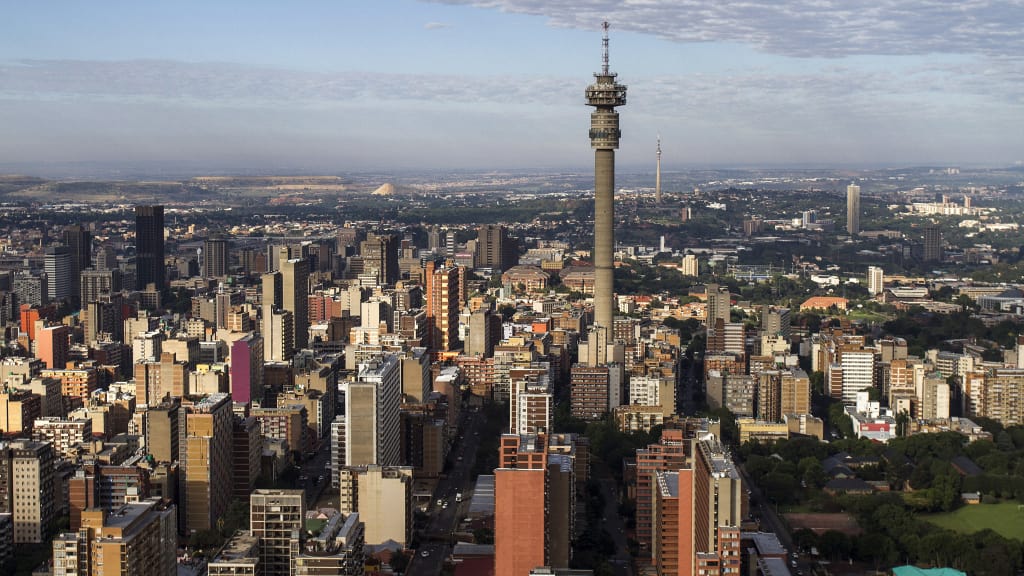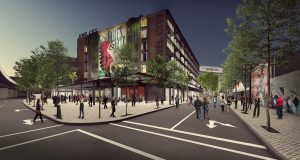Urban Renewal – some inspiring projects
Interesting projects in urban renewal are happening around the world, not least in Johannesburg, whose inner city was declared open for business in August 2018. Johannesburg executive mayor, Herman Mashaba, declared it open by putting 71 properties out to private sector tender for development into mixed-income housing, student accommodation and small business rental space. This is all part of the City of Joburg’s inner city revitalisation project, which was approved by the Council in September 2017. In November 2018, the City of Johannesburg officially kicks off the R1.2 billion redevelopment of a 40,000m² area in the central business district, which will see the construction of a new precinct boasting a school, clinic, gym, parking space, shops, fast food outlets and restaurants.
Divercity, an urban property fund, will build 1,200 new residential apartments in the first phase of redevelopment, with another 1,000 added to the new modern inner-city neighbourhood in the second phase.
The development is expected to create an estimated 1,279 temporary jobs and 1,384 permanent jobs, contributing to the municipal and national tax base.
What does it mean to revitalise or rejuvenate a city?
Urban areas are complex dynamic systems. Whilst they reflect the activities that drive physical, social, environmental and economic transition, urban areas are themselves in turn prime generators of many changes.
Urban rejuvenation is an interventionist activity, responding to the opportunities and challenges which are presented by urban degeneration. Rejuvenation or regeneration, as explained in biology, is the ability of a living organism to regrow a portion of its body that has been injured or lost. Plants regenerate stems and leaves, as long as their roots have not been destroyed. Regeneration means to form again, to recover from decline, or to replace a body part by new growth.
At its most basic level, urban rejuvenation contributes to sustainable development by recycling land and buildings and saving on demolition waste and new construction materials. It also provides an opportunity to use design and technological innovation to drive sustainability in construction, infrastructural and urban management systems.
In addition, urban regeneration has the following aims:
- to give a new lease of life to the urban residents
- to improve their standard of living
- to create an aesthetic city in a fitting and decent environment, worthy of emulation
- to provide guidelines for measuring and monitoring abnormalities in urban growth
Collaboration is key; Private sector essential
Herman Mashaba’s urban rejuvenation project in Johannesburg is based on a well-researched principle. According to a report released in 2016 from the World Bank and the Public Private Infrastructure Advisory Facility (PPIAF) , the most crucial component in rejuvenating decaying urban areas around the world is private sector participation. “Urban regeneration projects are rarely implemented solely by the public sector. There is a need for massive financial resources that most cities can’t meet,” said Ede Ijjasz-Vasquez, Senior Director for the World Bank’s Social, Urban, Rural and Resilience Global Practice. “Participation from the private sector is a critical factor in determining whether a regeneration program is successful – programs that create urban areas where citizens can live, work, and thrive.”
As we in Johannesburg face the challenge of our own regeneration, it is important that we build on the experience of cities from different regions around the world. Although there is no “one size fits all” approach when looking for solutions to cities’ deteriorating areas, there are case studies that can help us, starting with another look at ourselves.
Johannesburg
In the 18 square-kilometer inner city of Johannesburg, a series of targeted regeneration initiatives achieved a decline in property vacancy rates from 40 percent in 2003 to 17 percent in 2008, and a corresponding jump in property transactions. Since 2001, for every million rand (about USD 63,000) invested by the Johannesburg Development Authority, private investors put R18 million into the inner city, creating property assets valued at R600 million and infrastructure assets valued at R3.1 billion.
Singapore
In Singapore, the polluted Singapore River ceased to be used for trading activities as large-scale container ports gained prominence.
“Capitalizing on the Singapore River’s historical importance and potential for redevelopment, the government launched a transformational program that preserved cultural heritage, improved the environment, and opened the area for recreational pedestrian use. Similar efforts elsewhere can rejuvenate cities and regional economies,” said Jordan Schwartz, Director of the World Bank’s Infrastructure & Urban Development Hub, based in Singapore.
Chile
The city of Santiago lost almost 50 percent of its population and 33 percent of its housing stock between 1950 and 1990. But the city turned this around, using a national housing subsidy specifically targeted at the repopulation of the inner city. During the life of the project, private investment reached USD3 billion, stimulated by a USD138 million subsidy.
Argentina
Buenos Aires found itself on the verge of becoming unsustainable, when urban sprawl moved away from the downtown area leaving prime waterfront land, with significant architectural and industrial heritage, vacant and underused. To tackle this problem, the city used a self-financing urban regeneration initiative to redevelop the unused 170-hectare land parcel into an attractive mixed-use waterfront neighborhood. The total investment reached USD1.7 billion, with USD300 million invested by the city through the sale of land.
Republic of Korea
Seoul experienced a major decrease in residential and commercial activity in its downtown area, where small plots, narrow roads, and high land prices made development too costly. From 1975 to 1995, Seoul lost more than half its downtown population, and substandard housing became the norm for mostly squatters and renters. Seoul launched the Cheonggyecheon revitalization project to open up an 18-lane elevated highway that had been built over a stream. The reclaimed stream has become a green public space totaling 16.3 hectares, dramatically increasing real estate values and the variety of uses of the downtown areas.
India
In Ahmedabad, mills along the Sabarmati Riverfront were closed down, and unemployed labourers established large informal settlements along the riverbed, creating unsafe and unclean living areas and reducing the flood management capacity. In response, the city created a development corporation to reclaim 200 hectares of riverfront land on both sides and paid the project costs through the sale of 14.5 percent of the reclaimed land, while the rest of the riverfront was transformed into public parks. The labourers were resettled through a national program.
Sustainable partnerships
No two cities are the same, and each one has to analyse its problems in order to meet the challenges of rejuvenation. However, these formidable partnerships between local governments and the private sector have proved that together they can reverse the processes of economic, social, and physical decay in urban areas, and move instead towards the sustainable, inclusive development of their cities.
On Monday19 November Divercity’s major shareholders and stakeholders, Atterbury Property, Ithemba Property and Talis Property Fund as well as its cornerstone investors RMH Property and Nedbank Property Partners, attended a ceremony where Johannesburg mayor Herman Mashaba turned the first sod. “We all have a responsibility to create an enabling environment for business in the city. As a city, we have taken the responsibility to be the driver of economic development for this country and for the continent.”
Johannesburg’s new inner city will reflect this can-do attitude, and will no doubt feed into a healthy cycle of Afrikan renewal.






